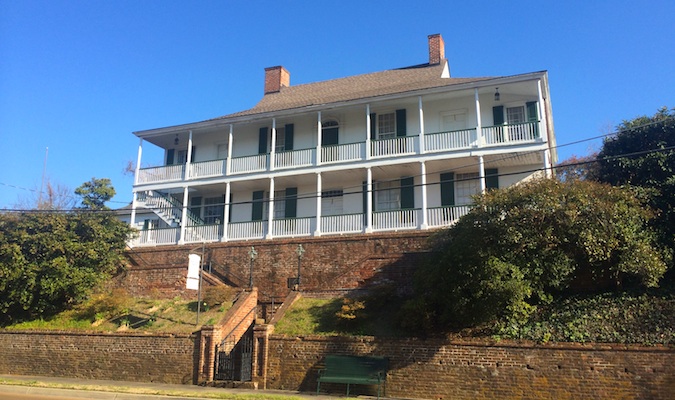
As the Southern cotton economy expanded on the back of slave labor in the early 1800s, towns designed to transport the cotton emerged on the Mississippi River: New Orleans, Memphis, Vicksburg, and Natchez.
Located high on the bluffs of the Mississippi River, Natchez, Mississippi, was established by French colonists in 1716. The defensible strategic location ensured that it would become a pivotal center for trade.
In the middle of the 19th century, the city attracted Southern planters, who built mansions to show off their vast wealth from the cotton and sugar cane trade. Natchez was where planters came to escape the heat and isolation of the plantations. It was the Hamptons of the South — the place where the rich relaxed and socialized.
I never heard of Natchez until a few weeks before I visited. While visiting Nashville, I met some local Southern boys at a bar. Fascinated by my road trip plans, they gave me all the information they could on their home state of Mississippi. I mentioned my desire to see old Southern antebellum homes.
“That’s Natchez. If you want antebellum homes, Natchez is the place to be,” the three guys said in unison.

They were right.
Natchez was highlight of my time in the American South. As a former history teacher who specialized in pre–Civil War America, I take a significant interest in this part of the country. I’m fascinated by the hypocrisy and duality of pre–Civil War Southern society.
On the one hand, it was genteel, polite, and formal. On the other, it was brutally racist. Southern egalitarian views of chivalry, equality, and honor extended only to a small segment of society, and they found no hypocrisy in owning slaves. (Note: Reams of thesis papers and books have delved into Southern culture. If you’re looking to learn more, check out Ken Burns’s The Civil War and The Fall of the House of Dixie: The Civil War and the Social Revolution That Transformed the South.)
Natchez remains a beautiful city. Secession sentiment never ran high here, and the city quickly surrendered to the Union Army in 1862. None of the destruction that took place in other cities occurred here, leaving the city intact.
Today, Natchez trades in tourism instead of cotton. Visitors to the historic homes and surrounding national park (Natchez Traces) and gambling on the riverboats sustain this tiny town.

But the old homes are the biggest draw.
By today’s standards, they are tiny suburban homes. You wouldn’t stop and think “Wow, that is a mansion!” But for the period, these homes were an ornate testament to the planters’ great wealth, with high ceilings, intricate wallpaper designs, and multiple stories, and they were filled with fine china, carpets, and furniture.
You can visit 10 of the larger unoccupied homes (one for $12 or three for $30). Of the five I saw, I was big fan of Longwood (the best grounds and most unique home), Rosalie (the most beautiful interior), and Stanton Hall (the prettiest grounds). During the Natchez Pilgrimage in the spring, 24 additional private historical homes open up to the public. The costumed guides — some descendants of the original owners — explain the history of the home, their family, and the region. It’s the city’s biggest annual event.
There are also a number of self-guided walking tours that wind through the city. Along the way, historic markers give you the history of the buildings, neighborhoods, and the residents who called them home.


There is King’s Tavern, built in 1769, the oldest bar in the city (and, according to legend, the most haunted). Walking toward the riverboat casino, you’ll come across what is left of Natchez Under the Hill. This one-time bustling dock area of the city was where dockworkers, prostitutes, and drunkards socialized. It was the city’s underbelly during the boom times. Now a sanitized street of restaurants and bars, it does still contain the oldest bar on the Mississippi River, Under the Hill Saloon.
Natchez is beautiful and elegant. I loved strolling around the streets, marveling at the beautiful homes, stopping at King’s Tavern for wine while avoiding ghosts, and sitting in the park as the sun set over the Mississippi.

The downside to Natchez is that it’s expensive. There are no hostels, and I couldn’t find any Couchsurfing hosts, only hotels and B&Bs. Though you can stay in one of the antebellum homes, they aren’t cheap, costing about $120-160 per night (including breakfast).
The upside? While accommodation is expensive, food and drinks are relatively cheap, with a number of sandwich and BBQ joints in the city offering meals for under $10.
Natchez can be seen in a weekend. It may not be a budget travel destination, but if you are looking to learn about American history, see beautiful homes, and visit a destination off the beaten path for most travelers (visitors here tend to be from the surrounding region), visit Natchez.
没有评论:
发表评论